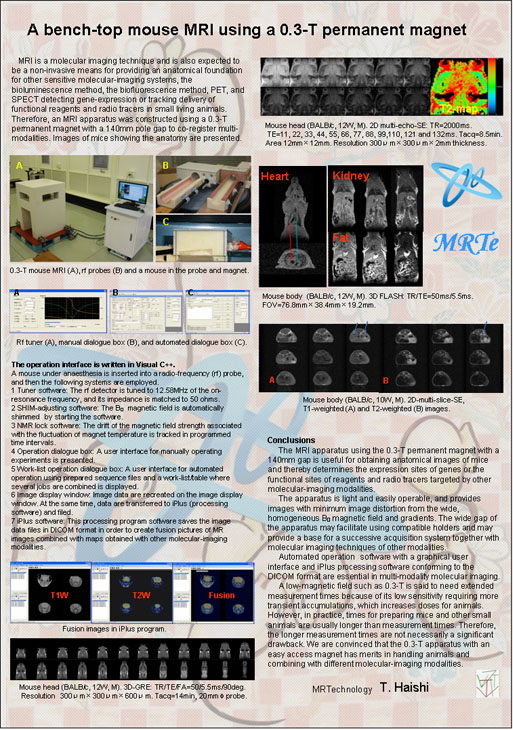0.3-Tesla MRI with a large homogeneous imaging volume.
Update : 2010.11.22 (02:44:51)
Posted : 2010.11.10 (03:27:42)

We performed NMR imaging for two pieces of hand-rolled sushi and a red rice ball using a 0.3T/14cm-gap magnet which had a 18cm diameter x 8cm height maximum imaging volume. The sushi and the rice ball were bought in a local super market. The imaging sequence was a 3D-gradinet echo method; the total time for acquisition was 11 minutes, imaging matrix was 512x256x64, TR/TE=40/6ms, matrix size = 0.4x0.4x0.8mm.
The upper image set shows the slice position of an upper layer. The lower image set corresponds to the center layer of the 3D imaging data.
The rightmost image is “Maguro-Akami-Nigiri-Sushi” (lean tuna). The center is “Ikura-Gunkan” (salmon roe topped on a battleship-style rolled rice). The left hand side is a red rice ball as an imaging reference. The red rice ball is made of glutinous rice and red beans. Sesame and salt are sprinkled on its surface for flavoring.
Please see the difference of the rice density in the red rice ball in the upper/lower images in addition that there are random locations of the red beans in the same rice ball. The rice densities of the two different Sushi(s) (Nigiri/Gunkan) seem little different and lean tuna and salmon roe are simultaneously imaged. It is said that such the porosity made of rice surface-connection has a great effect to its texture and taste so that I hope we may be able to perform qualitative analysis for rise taste with an MR image’s statistical analysis of detecting rice’s long axis and porosity.
These images are by courtesy of Dr. Shinya Handa.



